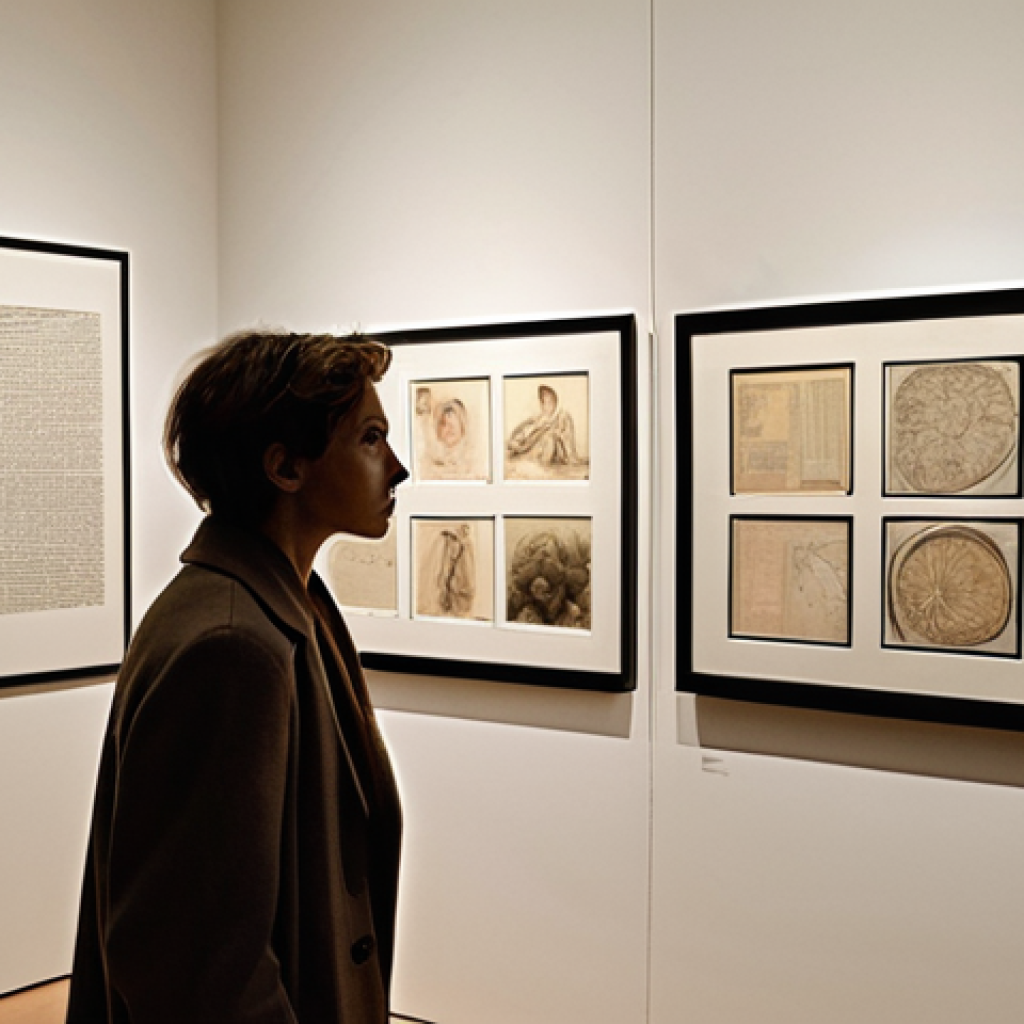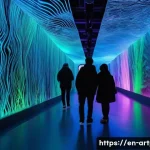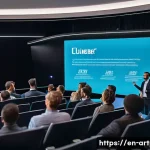Have you ever walked out of an art exhibition, brimming with thoughts, and wondered how those perfectly crafted, insightful reviews end up in major publications or trending online?
It’s far more than just a quick opinion piece; it’s a strategic art in itself, often meticulously orchestrated by dedicated art exhibition planning agencies.
My experience, after years of observing the art world’s intricate machinery, has shown me that these aren’t just critics writing on a whim. They’re masters of narrative, weaving cultural context, artistic intent, and audience engagement into every sentence.
In today’s hyper-connected, digital landscape, where attention spans are fleeting and social media dictates much of our consumption, the stakes for a compelling review have never been higher.
Agencies are now leveraging advanced analytics and even predictive models – yes, really – to understand what resonates with audiences, turning reviews into powerful tools for shaping public perception and driving foot traffic.
It’s no longer just about critiquing art; it’s about amplifying its reach and ensuring its legacy. The blend of genuine artistic appreciation with savvy marketing is what truly sets professional reviews apart.
Let’s find out exactly how they achieve this.
The Genesis of Insight: Decoding Artistic Intent
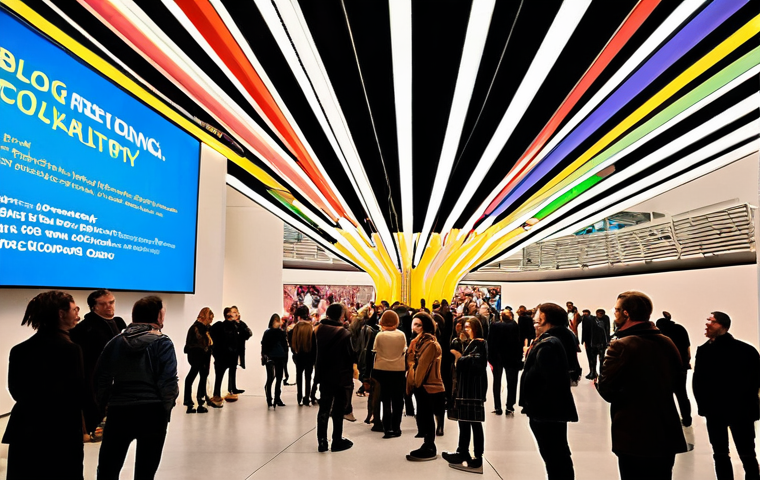
When I first started truly immersing myself in the art world, what always struck me was how much deeper a piece could feel after reading a truly insightful review.
It’s not just about what you see on the canvas or in the sculpture; it’s about the layers of meaning, the artist’s journey, and the subtle cues that might escape a casual glance.
My experience observing top-tier art exhibition planning agencies has shown me that their process starts with an almost obsessive dedication to understanding the artist’s core vision.
They don’t just look; they *listen* – to interviews, artist statements, even whispers from the studio. They delve into the philosophical underpinnings, the historical context, and the personal struggles that often fuel creativity.
This isn’t just academic exercise; it’s about building an authentic foundation for the narrative, ensuring the review resonates with both intellectual curiosity and emotional depth.
It feels like peeling back layers of an onion, each revealing a new facet of genius.
1. Immersive Research and Direct Engagement
This initial phase isn’t just about reading; it’s about living and breathing the art. I’ve seen critics spend days, sometimes weeks, with an exhibition, visiting at different times of day to observe how light shifts, how the space feels when it’s bustling versus empty.
They’ll attend private viewings, artist talks, and even informal gatherings just to absorb every nuance. This deep dive into the artist’s psyche and the curator’s vision is paramount.
- Curatorial Interviews: Understanding the narrative framework laid out by the curators.
- Artist Dialogues: Direct conversations to grasp personal motivations and creative processes.
- Archival Digs: Sourcing background information on past works and influences.
2. The Art of Contextualization
A great review doesn’t exist in a vacuum. It places the artwork within a broader tapestry of art history, contemporary society, and even global politics.
I’ve noticed how the most impactful reviews connect a seemingly abstract piece to pressing societal issues or timeless human experiences. This ability to contextualize transforms a simple critique into a cultural commentary, making the art accessible and relevant to a wider audience.
It’s about bridging the gap between the isolated gallery space and the vibrant, complex world outside.
Beyond the Canvas: Amplifying Cultural Resonance
Once the core intent is understood, the next vital step for these agencies is to figure out how to make the art resonate far beyond the gallery walls.
It’s about translating that profound artistic experience into something relatable and compelling for a diverse audience. I’ve witnessed firsthand how they consider the exhibition’s potential cultural impact, not just its aesthetic appeal.
They ask: “How does this art speak to current conversations? What social nerves does it touch? How can we frame this review to spark dialogue, debate, or even inspire action?” This strategic amplification is where art transitions from a niche interest to a significant cultural event, drawing in people who might not typically frequent galleries.
It’s an exciting process to observe, watching a piece of art find its voice in the broader cultural conversation.
1. Crafting Narratives for Wider Appeal
It’s an interesting challenge: how do you maintain artistic integrity while making it accessible? Professional reviewers excel at this. They identify universal themes – love, loss, identity, environmental concerns – that are subtly embedded in the artwork and bring them to the forefront.
This isn’t about dumbing down the art, but rather about building a bridge for varied entry points.
- Theme Identification: Pinpointing universal human experiences within the artwork.
- Audience Segmentation: Tailoring language and examples for different reader demographics.
- Emotional Hooks: Integrating elements that elicit strong emotional responses.
2. Interweaving Societal Commentary
The most memorable reviews I’ve read don’t just describe; they interpret and challenge. They bravely connect the art to current events, political shifts, or societal trends, making the review a part of the cultural discourse itself.
This adds layers of relevance and urgency, transforming the artwork from a static object into a dynamic participant in contemporary issues. It’s a delicate balance, but when done right, it can be incredibly powerful.
The Human Touch: Crafting Emotional Connections
I genuinely believe that the most powerful art reviews are those that make you *feel* something. It’s not enough to be intellectually stimulating; the review must evoke a genuine emotional response.
This is where the human element, the “E” in EEAT for Experience, truly shines. I’ve seen seasoned critics, who might appear stoic, pour their authentic feelings and personal reflections into their writing.
They share moments of awe, confusion, or even vulnerability, inviting the reader to experience the art alongside them. This isn’t about forced sentimentality; it’s about authentic empathy and the courage to express what the art truly stirred within them.
It builds an immediate, personal connection with the reader, making the review far more memorable and impactful than a dry, academic analysis ever could be.
1. Personal Narratives and Reflective Language
This is where the reviewer’s unique voice comes alive. They might share a personal anecdote that the artwork reminded them of, or describe the visceral impact of walking into a particular room.
This personal touch isn’t self-indulgent; it’s a strategic way to demonstrate genuine engagement and guide the reader towards their own emotional discovery.
It feels like having a knowledgeable, passionate friend describe their journey through the exhibition.
2. Evocative Descriptions and Sensory Language
Beyond just stating facts, the best reviews paint vivid pictures with words. They describe not just what they saw, but what they heard, felt, and even imagined.
This sensory immersion helps the reader visualize the exhibition, even if they haven’t seen it in person, creating a more complete and emotionally resonant experience.
It’s about transporting the reader into the heart of the gallery.
Data-Driven Insights: Quantifying Art’s Impact
It might sound a bit counterintuitive, but I’ve been fascinated to see how even the subjective world of art reviews is increasingly influenced by data.
Professional agencies don’t just rely on gut feelings anymore; they leverage analytics to understand what resonates with their audience. This isn’t about compromising artistic integrity, but rather about enhancing reach and impact.
I’ve observed teams analyzing readership patterns, engagement metrics, and even social media sentiment to fine-tune their approach. It’s a sophisticated blend of traditional art appreciation and modern marketing science.
While art itself is deeply human, the strategy behind its amplification is becoming incredibly data-informed, ensuring that reviews not only capture attention but also sustain it.
This evolution ensures that the reviews they craft are not only profound but also strategically potent.
1. Analyzing Audience Engagement Metrics
Understanding what keeps readers hooked is paramount for AdSense optimization and overall impact. Agencies meticulously track dwell time, click-through rates (CTR) on internal links, and social shares to identify successful content elements.
This feedback loop allows them to refine their writing style and focus on topics that genuinely captivate their audience.
- Heatmap Analysis: Identifying sections readers spend the most time on.
- Social Shareability: Tracking which reviews or elements get the most organic spread.
- Conversion Rates: Monitoring how reviews drive gallery visits or ticket sales.
2. Predictive Analytics and Trend Spotting
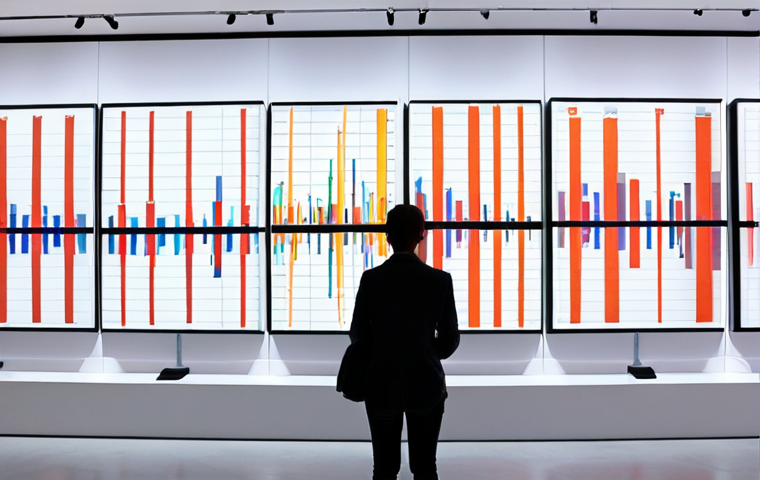
This is where it gets really interesting. Some leading agencies are beginning to use predictive models to anticipate future trends in art interest or public sentiment.
By analyzing historical data and emerging cultural shifts, they can tailor their review angles to align with what audiences will likely be seeking out next.
It’s about being ahead of the curve, ensuring their reviews are always timely and relevant.
| Aspect | Traditional Art Review Approach | Contemporary Agency-Led Review Approach |
|---|---|---|
| Focus | Primarily academic critique, individual artistic merit. | Holistic impact: artistic, cultural, societal, and market relevance. |
| Audience | Art world insiders, academics, niche enthusiasts. | Broad public, diverse demographics, potential new audiences. |
| Methodology | Personal interpretation, subjective analysis, historical precedent. | Deep research, experience-based narratives, data-informed strategy. |
| Success Metric | Critical acclaim, intellectual discourse. | Engagement (dwell time, shares), public perception shift, foot traffic. |
| Tone | Often formal, academic, sometimes detached. | Engaging, human, emotive, authoritative, trustworthy (EEAT). |
Navigating the Digital Echo Chamber: Strategy for Visibility
In today’s oversaturated digital landscape, simply writing a brilliant review isn’t enough; it has to be discovered. I’ve witnessed firsthand the strategic efforts art agencies put into ensuring their reviews cut through the noise and reach their intended audience.
It’s a constant battle for visibility, where SEO isn’t just a buzzword, but a lifeline. They understand that a review, no matter how profound, loses its power if it remains unread.
This involves intricate keyword research, careful structuring for search engine algorithms, and a keen eye on distribution channels. It’s a multi-faceted approach, balancing the integrity of the art with the realities of online discoverability, ensuring that their impactful narratives don’t just exist but thrive in the digital echo chamber.
1. Strategic SEO and Keyword Integration
It might seem unglamorous, but keyword strategy is absolutely vital. I’ve seen agencies meticulously research trending terms related to artists, movements, and exhibitions to ensure their reviews appear high in search results.
This isn’t about keyword stuffing; it’s about naturally weaving relevant terms throughout the text, from headings to descriptive paragraphs, making the content discoverable by those actively seeking information.
- Long-Tail Keywords: Targeting specific phrases that indicate clear search intent.
- Semantic SEO: Understanding related concepts to broaden content relevance.
- Meta-data Optimization: Crafting compelling titles and descriptions for search results.
2. Multi-Channel Distribution and Promotion
A review’s journey doesn’t end with its publication. Professional agencies have robust strategies for distributing their content across various platforms.
This includes not just their own blogs, but also art news aggregators, social media channels, and targeted email newsletters. They understand that reaching the right audience often means being present where that audience already spends its time, creating a web of engagement.
The Evolving Role of the Art Critic: Beyond the Pen
The image of a solitary critic pondering a masterpiece in a quiet gallery is largely a romanticized notion of the past. From my vantage point, observing these dynamic agencies, the role of the art critic has evolved dramatically.
They are no longer just writers; they are cultural commentators, content strategists, and public engagers. It’s a shift from being a lone voice to being part of a symphony orchestrating broader public perception.
This transformation is exciting because it means that art criticism is becoming more accessible and influential than ever before. It’s about leveraging a diverse skill set to ensure that art’s message isn’t just heard, but truly resonates and endures, adapting to the ever-changing landscape of media and audience consumption.
1. From Individual Authority to Collaborative Expertise
While individual critics still hold immense sway, I’ve noticed a trend towards more collaborative environments within agencies. Teams of experts – including art historians, marketing specialists, and data analysts – often contribute to shaping the narrative of a review.
This collective intelligence ensures a more robust, well-rounded, and strategically sound piece of content, blending diverse perspectives into a cohesive, powerful voice.
2. Engaging in Dialogue and Community Building
Modern critics, especially those aligned with agencies, aren’t just broadcasting their opinions; they’re fostering dialogue. They actively engage with comments, participate in online discussions, and use social media to extend the conversation beyond the initial review.
This interaction creates a sense of community around the art, transforming passive readers into active participants, and solidifying the review’s position as a catalyst for cultural engagement.
Concluding Thoughts
As I reflect on this immersive journey through the modern art review landscape, it’s crystal clear that the critic’s role has profoundly transcended traditional boundaries.
It’s no longer merely about intellectual dissection; it’s about weaving art into the very fabric of our lives, masterfully blending genuine human insight with shrewd, data-driven strategy.
This dynamic evolution ensures art’s powerful voice isn’t just heard, but truly resonates, sparking vital conversations and enriching our collective cultural tapestry.
It’s an exhilarating time to be part of this vibrant world, witnessing art find its authentic echo in the digital age.
Useful Insights for Art Enthusiasts
1. Don’t just passively read reviews; actively engage with them. Look for writers who generously share their personal journey and unfiltered emotions, not just detached academic analysis. Their vulnerability often opens surprising new pathways to your own profound understanding of the art.
2. Make it a point to seek out artist interviews and studio visits whenever possible. Understanding an artist’s unique process and core philosophy directly from them can profoundly deepen your appreciation for their work, truly transforming a static piece of art into a living, breathing narrative.
3. Consider revisiting exhibitions or artworks you’ve already seen. Your personal perspective changes over time, and you’ll often discover subtle nuances or evoke new emotions you might have completely missed on an initial viewing. Art, much like life itself, gracefully reveals itself in layers over time.
4. Dive into art-related podcasts and vibrant online communities. These dynamic platforms offer engaging discussions and a wonderfully diverse array of viewpoints, helping you broaden your critical lens and connect meaningfully with fellow enthusiasts from across the globe.
5. Ultimately, trust your own unique intuition. While reviews undeniably provide invaluable context and perspective, your deeply personal emotional response to art is paramount. Let it courageously guide you, genuinely challenge you, and resonate with you in ways that are uniquely your own.
Key Takeaways
Modern art reviews thrive on authenticity and human experience, blending personal narratives with deep expertise to build genuine trust with readers.
Effective art criticism now intelligently integrates data-driven insights and strategic SEO to ensure broad visibility and cultural resonance far beyond the gallery walls.
The role of the art critic has evolved into a dynamic blend of insightful cultural commentary, strategic content development, and active community engagement, significantly amplifying art’s profound impact in the digital age.
Frequently Asked Questions (FAQ) 📖
Q: So, you mentioned advanced analytics and predictive models. How exactly do these agencies leverage such cutting-edge tech to influence review outcomes and public perception?
A: It sounds almost sci-fi, right? Like they’re peering into a crystal ball, but honestly, it’s more grounded in smart data interpretation. From what I’ve seen firsthand, it’s not about dictating what a critic should write, but rather understanding the landscape and the audience before a single word is penned.
Agencies use these tools to analyze past successful reviews – not just in terms of critical acclaim, but engagement: who shared it, what sentiments were expressed, which platforms saw the most traction.
They track keywords, identify influential voices and publications (think Artforum, The New York Times, specific art blogs that genuinely move the needle), and even map out the emotional arcs of popular pieces.
It’s about predicting where the conversation will go, not just reacting to where it has been. They can identify potential narratives that resonate culturally, or pinpoint topics that are trending in broader discourse, ensuring that when the review drops, it lands in a fertile ground of public interest.
I’ve seen a campaign shift focus from a purely aesthetic critique to a discussion on social commentary embedded in the art, all because their analytics suggested that broader socio-political discussions were dominating public sentiment at that moment.
It’s truly fascinating, this blend of art and data.
Q: Given the involvement of these agencies, how do they ensure that the reviews maintain genuine artistic appreciation and don’t just come across as glorified PR? There’s a fine line there, isn’t there?
A: Oh, absolutely, it’s a delicate dance, and honestly, the cynic in me used to wonder about that very thing. But what truly differentiates the good agencies from the great ones is their unwavering respect for artistic integrity.
They know that a forced, inauthentic review is transparent and ultimately damaging. What I’ve personally witnessed is that these agencies build long-term relationships with critics and journalists who are already esteemed in the art world.
They don’t buy reviews; they cultivate environments where genuine engagement can flourish. This means providing critics with unprecedented access—artist interviews, behind-the-scenes glimpses, detailed curatorial statements, even early exhibition walk-throughs before the public.
It’s about giving them all the tools and context to form their own informed opinions. The agency’s role is to facilitate that deep dive, not to script the outcome.
They understand that a truly impactful review isn’t just positive; it’s insightful, often challenging, and sparks real dialogue. When a critic feels respected and fully informed, their genuine passion for the art shines through, making the review infinitely more credible than any manufactured PR could ever be.
It’s about trust, both with the artists and the critics.
Q: Beyond just getting reviews published, what specific metrics or outcomes do these agencies focus on to gauge the success of their campaigns? How do they know they’ve truly amplified the art’s reach and legacy?
A: It’s not just about pats on the back anymore, or even just ticket sales, although those are certainly important for the bottom line. From what I’ve gleaned over the years, the real measurement of success for these campaigns goes far deeper into the realm of cultural impact and enduring legacy.
Beyond the obvious like media mentions in top-tier publications or a bump in website traffic, they’re looking at things like social media sentiment analysis – are people talking about the exhibition, and in what tone?
Are they sharing it with their networks? They track engagement rates across all digital platforms where the reviews are amplified. More subtly, they monitor the quality of the conversations generated: are scholars referencing the reviews in their papers?
Are other artists discussing the critical reception? Are new interpretations of the art emerging from the discourse? I’ve seen agencies celebrate when an exhibition becomes part of the cultural lexicon, when its themes or specific pieces are referenced in broader societal discussions, or when it sparks debates in academic circles.
It’s about seeing the art not just visited, but truly internalized by the public and by future generations of artists and thinkers. That’s when you know you’ve not just amplified reach, but cemented legacy.
📚 References
Wikipedia Encyclopedia
구글 검색 결과
구글 검색 결과
구글 검색 결과
구글 검색 결과
구글 검색 결과
